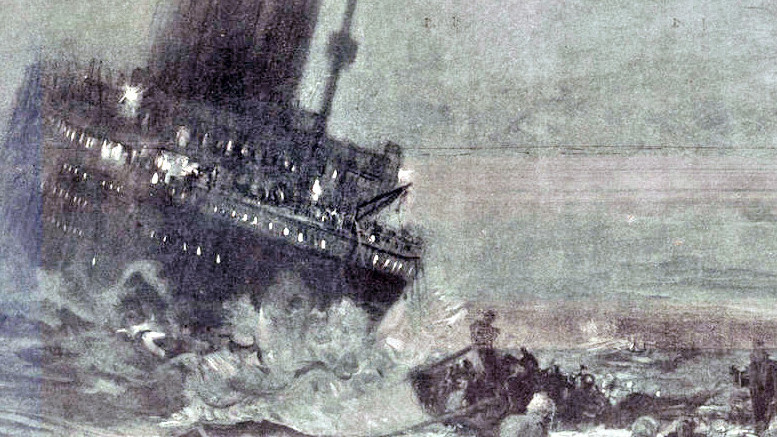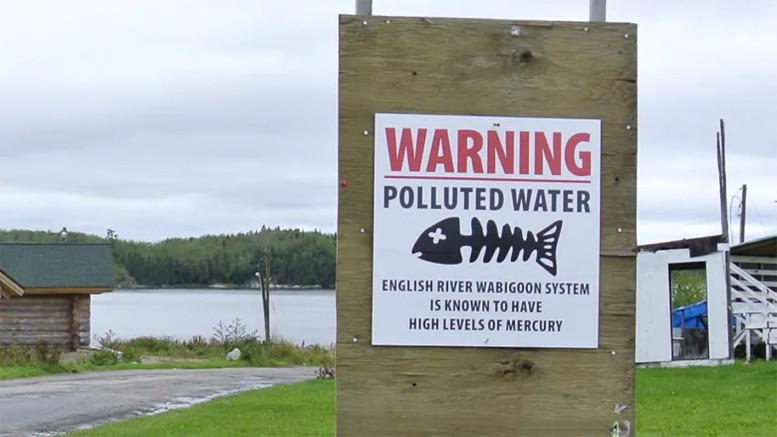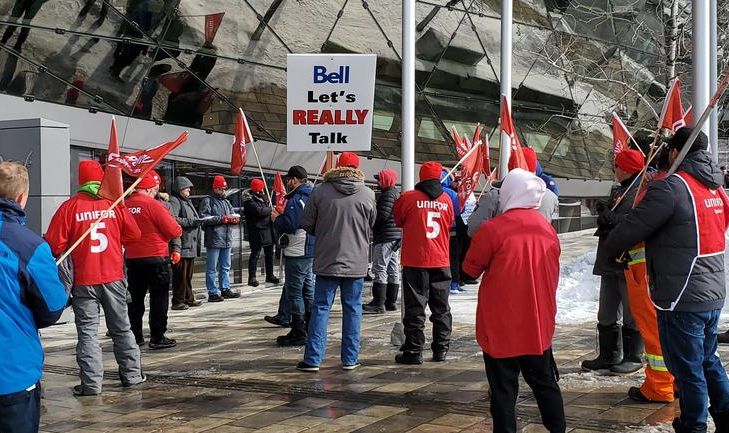Liberals Plan to Boost Climate Change
The federal Liberals’ decision to give the go-ahead to a major new oil field off the coast of Newfoundland shows their climate change policies are a dangerous fraud.
The most recent report of the Intergovernmental Panel on Climate Change (IPCC) states the world faces a “now or never” time to rapidly change course. Greenhouse gas emissions must peak by 2025, and then be halved in the next ten years to give the world a chance of limiting future heating to 1.5C above pre-industrial levels. If this doesn’t happen the world faces a catastrophic increase of 3C.
In response, UN Secretary-General Antonio Guterres warned that investing in new fossil fuel production and power plants is “moral and economic madness.” This follows the stark statement by the International Energy Agency (formerly in favour of oil production) in 2021 that there should be “from today, no investment in new fossil fuel supply projects.”
Yet Trudeau’s Liberals are going ahead with new investment and increased production of fossil fuels. So much for tackling climate change!
Liberals’ Climate Madness
The Liberals, especially Trudeau, have made many speeches about how climate change is real, and that Canada will be part of the solution. This is at best window dressing, but more accurately is Orwellian doublespeak.
The Bay du Nord announcement, alongside the purchase of the Trans Mountain pipeline, makes clear that the Liberals’ policy is to increase the production of fossil fuels. This will be given a light coat of green paint, by reducing the carbon footprint of the production of fossil fuels. However, the extraction, transportation and refining of oil produce around 18 percent of total emissions (carbon dioxide (CO2) and methane); the vast majority of CO2 is released when the fuel is burnt. The production of oil from Alberta’s tar sands have a higher footprint, but still the vast majority of CO2 is released in burning.
Trudeau’s aim is to lower the CO2 released in production, while still continuing to sell oil and gas to the world to burn. It is claimed Bay du Nord production will be net-zero by 2050 — 28 years from now! But net-zero is smoke and mirrors. It does not mean that the production produces no CO2. Instead, the CO2 produced is “offset” by planting trees or the CO2 is captured by removing CO2 from the air. However, Carbon Capture and Storage technology is expensive, unproven at a large scale and is itself energy intensive.
Budget’s Gestures
The Liberals’ 2022 budget had plenty of words about addressing climate change. However even according to the government, their actions are nowhere near enough and is mainly focused on reducing the carbon footprint of fossil fuel production in Canada, rather than ending their production.
The budget announced around $15 billion of new money to tackle climate change and encouraged industry to shift to less environmentally damaging production.
The biggest single item is $15 billion, over five years, for the Canada Growth Fund. It is a publicly owned “investment vehicle” to encourage big business to invest in their own businesses to reduce carbon emission, invest in low carbon industries and improve supply chains. In other words, another bribe to business. For decades, the Liberals and Tories have justified generous tax cuts for corporations as this would boost research, innovation, investment and jobs. Canadian business, in spite of generous tax cuts, has consistently lagged behind on research and investment, so along comes another bribe.
Other streams include: $2.6 billion over five years to support private companies investing in carbon capture; over $2 billion to subsidize a shift to electric and hydrogen vehicles; over $2.5 billion over seven years to support the mining and processing of 31 critical minerals, $2.2 billion over seven years for a Low Carbon Economy Fund to support provinces and other bodies to reduce greenhouse gases. There was less than $1 billion towards moving to clean electricity production.
While $15 billion sounds like a lot, it is woefully inadequate. The government admits that an additional $100 billion a year investment is needed to get to net-zero. Remember net-zero is not Canada stopping producing and using fossil fuels.
The IMF in 2021 estimated that Canadian subsidies (explicit and implicit) for fossil fuels came to $83 billion a year! Suncor, not Canada’s largest oil producer, announced its profits for the first three months of 2022 — $2.95 billion! This is the money that Canada needs to move to clean energy and tackle climate change.
Green (Peace) Washing
Canada’s Environment Minister, Steven Guilbeault, was a prominent Greenpeace activist. When first appointed, many conservatives and people connected to the oil industry expressed alarm. Conservative leadership candidate Pierre Poilievre, branding him a “looney-left environment minister,” and Alberta’s Premier, Kenney, said the appointment of Guilbeault sent a “very problematic message.”
Appointing Guilbeault was a clever greenwashing trick: get a former environmental activist to boost oil production. Guilbeault said on his appointment that “We’re not trying to cap production. We will be capping the amount of pollution that comes from those sectors.” This is clear Liberal hogwash; if oil is produced it will be burnt, releasing carbon dioxide.
Guilbeault’s policies clearly show the limits of the environmental activists who accept capitalism. It is a system that exists to make profits now, which is more important than the climate now and into the future.
Bay du Nord — What Could Go Wrong?
The development of the Bay du Nord would produce 300 million barrels of oil from 1,200 metres below the North Atlantic, 500 kilometres east of St. John’s. The project is estimated to cost $12 billion and aims to start production by 2028.
The Norwegian company, Equinor, and the Canadian government claim the project will be implemented to the highest safety standards to protect the environment and lives. What could go wrong?
In April 1912, 110 years ago, the Titanic sank in the North Atlantic, in the same dangerous waters, known as iceberg alley, as Bay du Nord. It was claimed that the Titanic was built to the highest safety standards and was considered unsinkable. In less than three hours after striking an iceberg it had broken apart and sunk beneath the waves, killing at least 1,500 people.
On February 15, 1982, just over 40 years ago, the Ocean Ranger, an offshore drilling rig, sank in the same area as the Bay du Nord. It was approved for “unrestricted ocean operations” and designed to withstand extremely harsh sea conditions. A strong storm with high winds and waves took it to the bottom of the sea, killing all 84 crew members.
Just 12 years ago, a rush of gas caused the Deepwater Horizon to explode, burn and then sink, killing 11 workers. This ruptured the oil line, spilling crude oil into the water for nearly three months until the well was capped on July 15. This is the biggest oil spill in US history, as 4.9 million barrels of oil spilled into the Gulf of Mexico, killing huge numbers of birds and marine life, devastating jobs and damaging coastlines for hundreds of miles.
The SeaRose Floating, Production, Storage and Offloading vessel, is a similar vessel to the one planned for use in Bay du Nord. In 2018 it spewed 250,000 litres of crude oil into the Atlantic Ocean off of Newfoundland producing an oil slick 21 kilometres long and 8 kilometres wide.
These are just a few of the many examples of oil companies cutting corners to boost profits at the cost of lives and the environment.
A recent review of lessons of the Ocean Ranger disaster states, “The lessons learned by the corporations in the wake of the Ocean Ranger and subsequent accidents are threefold: the probability of another such event is low; the cost of implementing effective safety measures is high; and the cost of potential lawsuits is manageable. In other words, business as usual.”
This drive for profits means safety will always be at risk, endangering workers’ lives and the environment.
Carbon Pimp
In 2015 Socialist Alternative published an article entitled Harper: Carbon Pimp to the World – A Disastrous Policy. Harper’s clearly stated goal was to make Canada a major carbon exporter to the world. However, it is Trudeau’s present policies that are on course to make Canada the Carbon Pimp to the World. In the early 2010s, Canada produced around 157 billion cubic metres (bcm) of natural gas a year. By 2020 it had increased to 184 bcm. It is set to dramatically expand if the facility in Kitimat BC is completed (still being opposed by Wet’suwet’en) — this has capacity to ship 21 bcm. Canada Energy Regulator expects gas production to increase to 216 bcm by 2040 (may be higher or lower depending on price).
Oil production and exports are also set to increase. Canada Energy Regulator’s report of 2018 states that by 2040 crude oil production will be 58 percent higher than in 2017. Most of this increase will be exported.
The Trudeau’s government’s commitment to boosting fossil fuel exports was demonstrated when in 2018 it bought the floundering Trans Mountain pipeline from Kinder Morgan. Since then the government has spent $17.3 billion on the pipeline and its estimated cost is now $21.4 billion, more than double the amount when Canada bailed out Kinder Morgan. Although the government has stated it won’t provide any more money, it has confirmed that it will guarantee $10 billion of loans. So, the people of Canada are on the hook if anything goes wrong. There remain significant questions whether it will ever be completed, given its growing cost and ongoing opposition. With the huge cost overrun, it is increasingly dubious if the pipeline will ever recover the costs. It is utterly clear that it poses a major threat to the west coast and will significantly increase climate change.
Most of the current crude oil carried by the TMX pipeline is refined and used in BC or western US. The new use will be for export. Capacity would increase by 600,000 barrels a day. A study by Marc Jaccard in 2014 estimated that producing, shipping, refining and burning the oil from TMX will add the equivalent of 71.1 million tonnes of CO2 annually.
On top of this, Enbridge’s Line 3 has increased capacity adding 370,000 additional barrels a day from Alberta to Minnesota and then on to Eastern Canada, the Midwest and Gulf Coast. The Bay du Nord oilfield would add an estimated further 188,000 barrels of oil a day for 30 years.
At the COP26 climate conference in Glasgow in 2021, Trudeau made a big deal about phasing out thermal coal. This coal is mainly burnt to produce electricity and very little was exported; most was burned in Canada and the aim is to transition to other ways to generate electricity in the next decade.
What he didn’t speak about is metallurgical coal (mainly used in steel production) of which Canada is a major exporter. In 2021, 11 new mines were proposed, with an output of 28 million tonnes per annum, almost all for export. It is unclear how many of these will go ahead. But there are no plans to end metallurgical coal exports.
In summary, the Canadian government plans to increase the exports of oil and gas, and so boost global warming.
Jobs and Climate
The Liberals’ plan does not end the production of fossil fuels — they have no intention of doing so. This a disaster for the entire world that will be devastated by increased climate disasters.
The Liberals have no major plan for a just transition that provides good jobs and a healthy planet. This lack of plan leaves workers in the fossil fuel sector — extraction, processing, etc. — in a desperate situation. Many know what they produce is deadly for people around the world, perhaps including their own children and grandchildren. But what other jobs are there?
When the Liberals announced the phase out of the domestic use of thermal coal in 2018, they promised $185 million to support the workers and their communities in the transition. This amounted to less than one year’s wages for the approximately 4,000 thermal coal miners, hardly generous. In contrast, the eight highest paid fossil fuel executives took in $92.7 million in 2020. Eight bosses get the same as 2,000 workers: that is the reality of Canadian capitalism. While the workers were left to suffer, the company TransAlta received $486 million for closing the Highvale mine in Alberta.
The phase out of thermal coal in Alberta was supposed to be a model for a transition. It was known to be happening and involved a fairly small number of workers and communities. Yet, in April 2022, Canada’s Auditor General released a highly critical report on the lack of support for the workers and communities impacted by the phasing out of coal mining and burning to produce electricity. No wonder workers in the fossil fuel sector are worried about their futures and likely to cling the jobs they have.
There is plenty of money to pay for a just transition — a plan that would provide good union jobs, improve people’s quality of life and tackle climate change. The key is taking that wealth out of the grasp of few large corporations and placing it in the hands of the working class that created the wealth. The government subsidies to fossil fuels, and the profits and executive payments of the corporations, amounts to billion of dollars. These resources, if democratically planned, would start to fund the revolution that is desperately needed.
These funds would pay for: a national program to insulate houses and upgrade their heating systems; a program to expand urban public transit alongside upgrading the national rail network to provide rapid inter-city rail for passengers and freight; significant investment in renewable energy; and a program of environmental rehabilitation.
Socialist Alternative is committed to build a movement to stop capitalism dragging humanity over the cliff. We are dedicated to winning a just transition to provide good jobs and a healthy environment. If you agree join Socialist Alternative.




